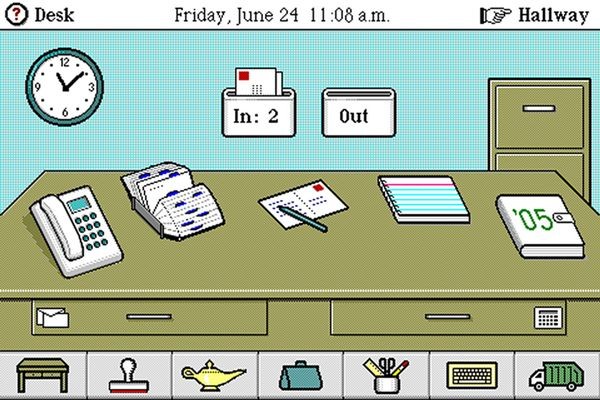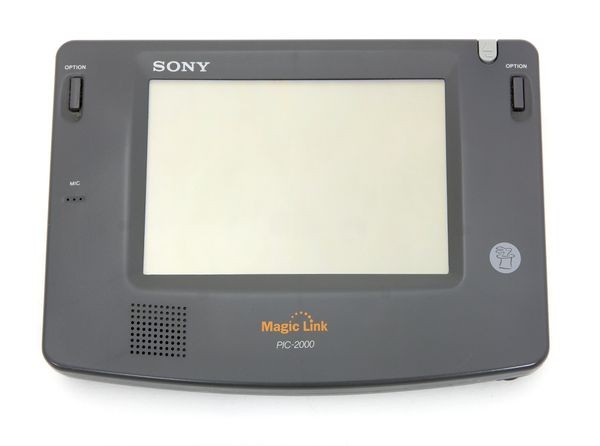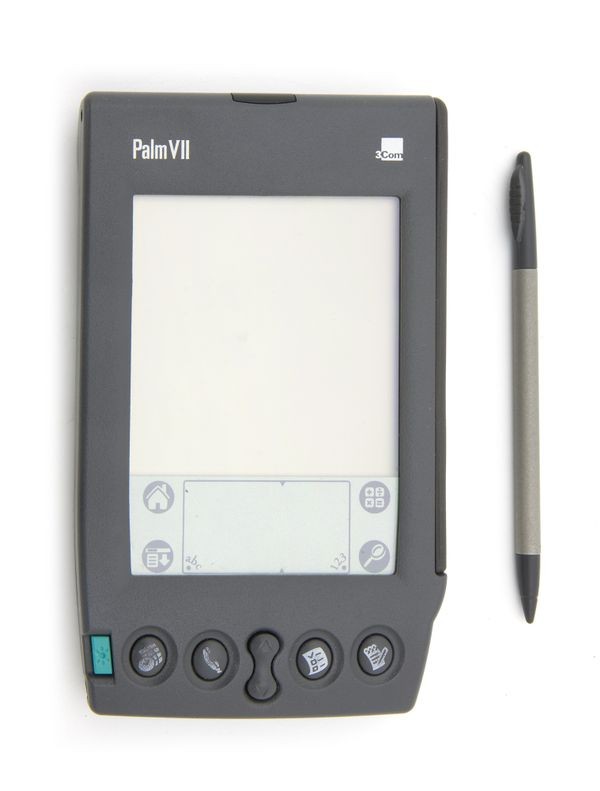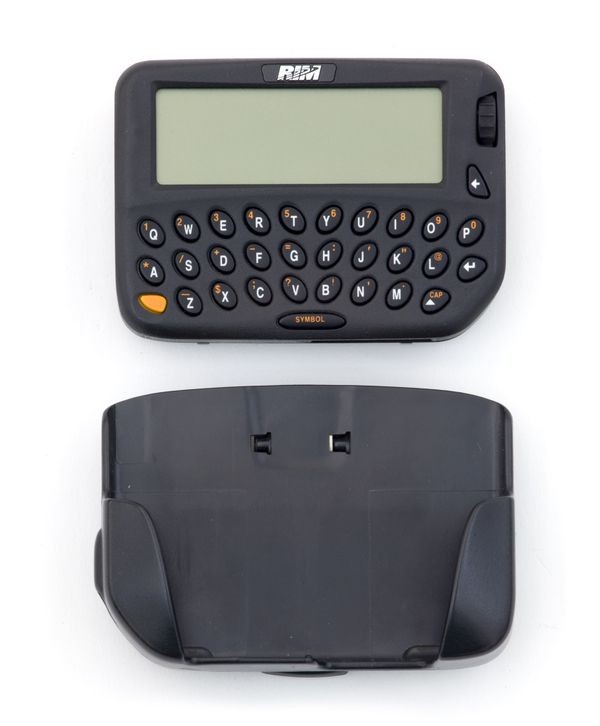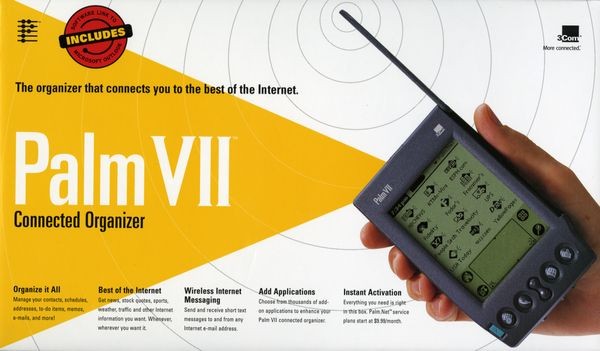Networked Handhelds
Magic Cap screenshot
General Magic made intelligent networking the center of its vision. Magic Cap never succeeded commercially, but it pioneered many innovative features of networked computing.
Networked Handhelds
Handheld computers and mobile phones were on an intercept course by 1990. Handhelds were starting to communicate, and phones were starting to compute.
Examples? The EO Personal Communicator had fax and e-mail. Psion organizers offered an optional wireless module. The Motorola MicroTAC phone had a phonebook and a calculator. The Magic Cap system had integrated networking and pioneered many communications features.
The Palm VII used clever design to achieve primitive Web browsing on low-speed pager networks using the Mobitex standard—which was also what early Blackberries used for e-mail.
Sony Magic Link
The Magic Link and the Motorola Envoy were the best known Magic Cap machines. But they weren’t pen-based, leaving them out of sync with the pen-crazy times. The “link” referred to connecting through the built-in modem.
View Artifact DetailPalm VII
From the late 1980s through the 1990s, handheld makers like Go, Psion, and RIM made several attempts at wireless data communication using early low-speed pager or mobile phone networks. The Palm VII also included simple Web browsing.
View Artifact DetailRIM Interactive Pager 950
The goal of Research In Motion’s pre-Blackberry products was to provide e-mail access everywhere. Running over Mobitex pager networks, they featured a clean interface and the surprisingly usable miniature thumb keyboard.
View Artifact DetailPalm VII
The Palm VII’s interface looked like that of other Palms but with added networking features such as a Web browser and e-mail.
View Artifact Detail